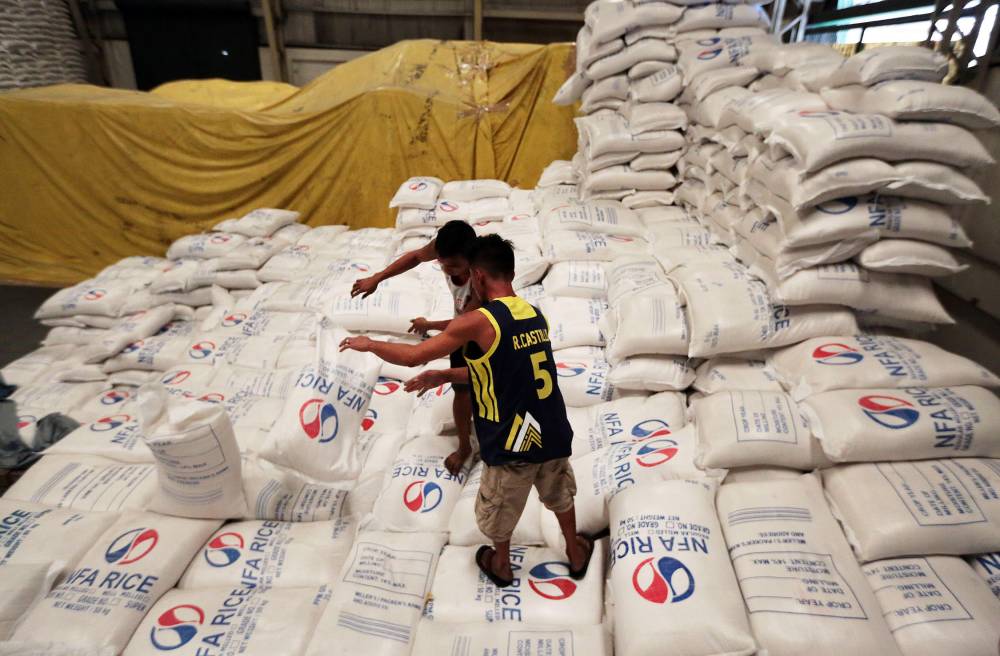PH rice stocks boosted by enlarged NFA buffer

The country’s rice inventory rose by 14.4 percent to 1.87 million metric tons (MT) as of Aug. 1 from the past year as stocks of the National Food Authority (NFA) nearly doubled following an increase in its palay (unhusked rice) buying price.
Compared with the inventory a month ago, however, local rice stockpile decreased by 14.2 percent from 2.18 million MT on July 1 as the harvest season has ended, based on a Philippine Statistics Authority (PSA) report.
Sought for comment, Federation of Free Farmers national manager Raul Montemayor said the country managed to build up stocks of the staple food year-on-year as rice imports reached more than 2 million MT from January to July.
“Despite the (month-on-month) decrease, the Aug. 1 stock level was actually better than in 2023 and 2022 when it was only about 1.6 million [MT]; but import arrivals were larger during those previous years,” Montemayor told the Inquirer in a Viber message.
“But month on month, [there is a] decrease, which is normal because July to September is the lean period, when there is minimal harvest and stocks tend to get depleted until the next harvest comes,” he said.
Montemayor, however, said the PSA data were “somewhat odd” as the stock level reportedly inched up even though local palay production had declined in the first semester of 2024.
“I have been questioning the PSA data for quite some time now because they often do not make sense. But the discrepancies were more glaring in the previous years. Baka inaayos na nila ngayon yong data nila (Perhaps, they have improved their data-gathering process),” he said.
Even so, Montemayor said the standing rice stocks would last for 50 days and “need to be augmented by imports to tide us over to the next harvest starting late September or early October.”
“The situation might become problematic if typhoon either destroys standing crops or delays harvests,” he added.
Stocks from NFA depositories surged by 195.9 percent to 150,740 MT from a meager 50,950 MT year-on-year, equivalent to a share of 8.1 percent.
Despite holding a share of less than 10 percent, NFA has been purchasing more palay after the NFA Council had raised the buying price early this year. Once milled, palay is converted into rice buffer.
The NFA Council approved a new buying price in April: P23 to P30 per kilo for clean and dry palay; and P17 per kg to P23 per kg for fresh and wet palay. The adjustment was meant to beef up its buffer for emergencies and allow the NFA to compete with private traders.
The NFA is mandated by the Rice Tariffication Law to maintain a national rice buffer stock equivalent to at least nine days of consumption, which will be sourced solely from local farmers.
Inventories of the commercial sector rose by 23.3 percent to 1.17 million MT, accounting for 64.2 percent of total.
But households reduced their stockpile by 13.3 percent to 551,900 MT. They contributed 29.6 percent to the overall rice stocks.
Corn stockpile
Meanwhile, the PSA noted that the country maintained 666,480 MT of corn as of Aug. 1, declining by 17.4 percent from the past year.
On a monthly basis, corn stocks dipped by 0.6 percent from 670,400 MT.
Annual decreases were reported at the stockpile of households (by 41 percent to 36,250 MT) and commercial sector (by 15.4 percent to 630,220 MT).
About 94.6 percent of last month’s corn inventory came from the commercial sector, and the remaining 5.4 percent from households.





















